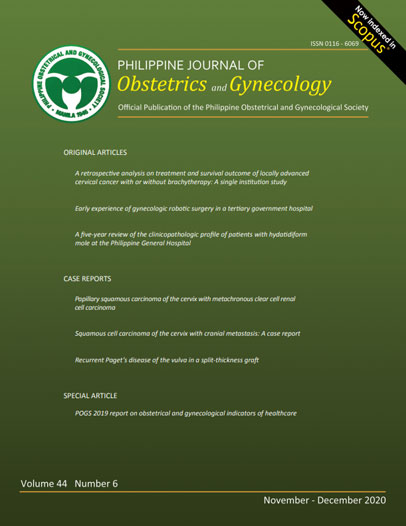Article Detail
Adenomyosis in Mayer-Rokitansky-Kuster-Hauser Syndrome
Laurice Gizelle C. Ramos, MD, Maria Lilia T. Reyes, MD, FPOGS and Debby F. Pacquing-Songco, MD, FPOGS, FPSRM
Department of Obstetrics and Gynecology, University of the East-Ramon Magsaysay Memorial Medical Center
Mayer-Rokitansky-Kuster-Hauser syndrome, the second most common cause of primary amenorrhea, is a congenital anomaly caused by defective Mullerian duct development. It is the absence of uterus, cervix and upper two thirds of the vagina that results in primary amenorrhea. This is a case of a 42-year-old, nulligravid with primary amenorrhea complaining of acute abdominal pain. She has no co-morbidities or previous surgeries. Examination revealed an absent cervix and a left adnexal mass. Ultrasonography revealed an atrophic uterus with no endometrial stripe and cervix, with possible ovarian tumor versus myoma. Impression was mullerian agenesis with pelvoabdominal mass in torsion. She then underwent total abdominal hysterectomy with bilateral salpingectomy and adhesiolysis. Intraoperatively, there were two hemiuteri connected by a fibromuscular stalk. Left hemiuterus was dextrorotated, adherent to the sigmoid mesentery and peritoneum. Histopathology confirmed absence of endometrial cavity but with adenomyosis in bilateral uterine buds. Chromosomal analysis confirmed 46, XX karyotype.
DOWNLOAD ARTICLE

